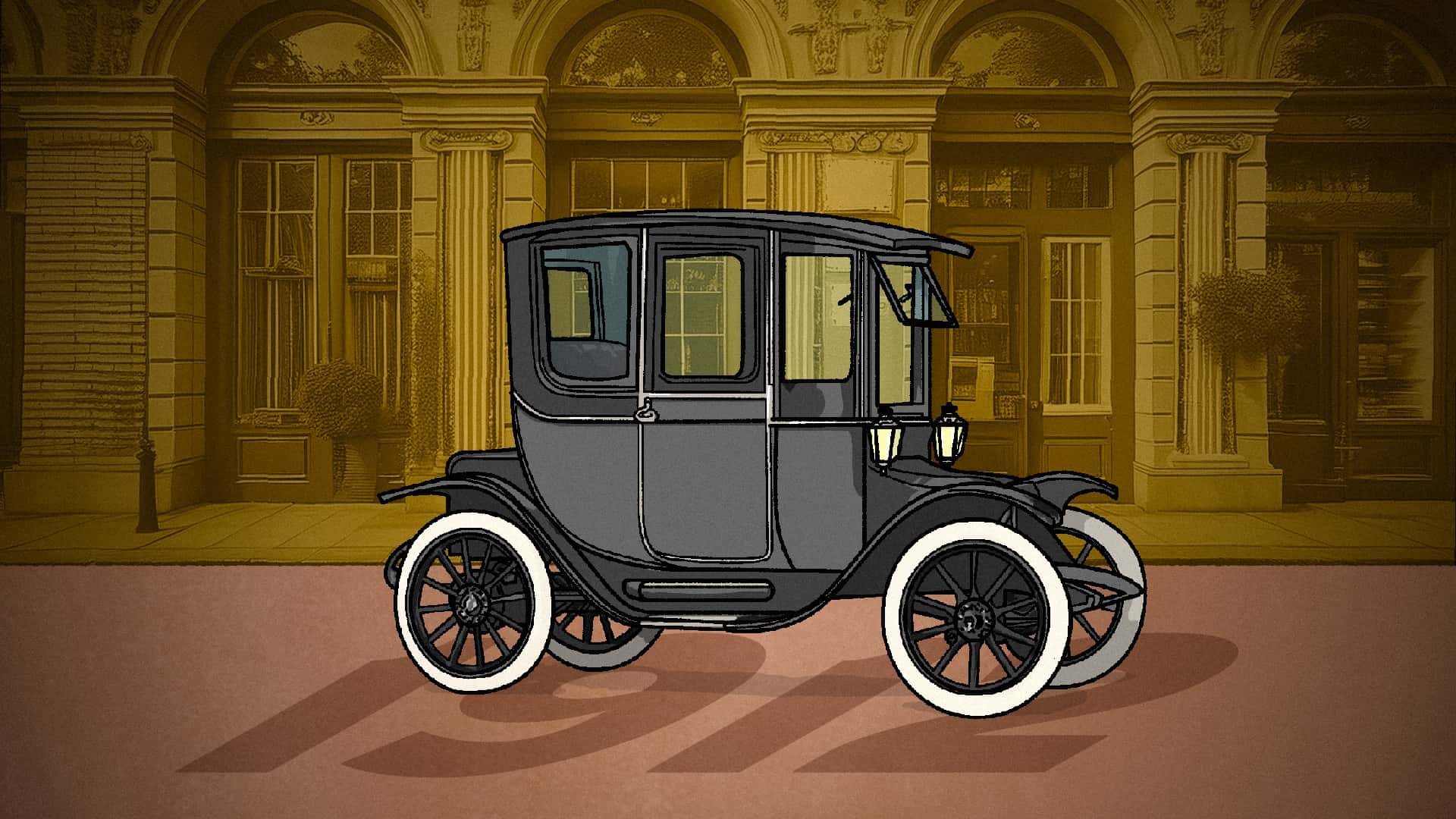
ELECTRIC VEHICLES HAD THEIR FIRST GOLDEN AGE IN THE EARLY 1900S
At the turn of the 20th century, there were thousands of electric vehicles in operation around the world.
By the 1890s, steam had established itself as the main source of power for trains, industrial applications and even the occasional passenger car. Gasoline-powered personal transportation was still in its infancy. So electric vehicles were preferred by most because they didn’t require a dangerous crank-starting procedure, they didn’t backfire and spew oil everywhere, and they were perceived as quiet and torquey.
Remember, this was a time when you'd get gasoline from your local pharmacist or the area blacksmith, if you had either, not a gas station on every corner.
If you were around back then you'd probably be more into batteries too.
EVs also held early motor car records including for the fastest vehicle. The torpedo-shaped Le Jamais Contente (“The Never Satisfied”), for instance, built by Belgian Camille Jenatzy, was the first car to exceed 62 mph (100 km/h) in 1899. It was powered by a pair of electric motors and had a lightweight shell made out of an aluminum alloy. Its aerodynamic shape, however crude, was a far cry from the tall and ungainly horseless carriages of the time, and this, combined with its silent electric power, made it way ahead of its time.
Detroit Electric is said to have built a total of about 13,000 EVs, and during its peak after 1910, it was selling between 1,000 and 2,000 battery-powered cars per year—it would take almost exactly 100 years for its annual EV sales figures to be exceeded.
These early EVs were marketed as luxurious city runabouts, and many celebrities used them to run errands around town. Some shopping centers even had electric car chargers to encourage wealthy EV owners to do their shopping there.
There were also electric vans being manufactured in the early 1900s, which were used by some businesses for last-mile delivery duty, but they were also ambulances and police wagons. In the United Kingdom, electric milk delivery vehicles (known as “milk floats”) entered service in the early 1900s, and they evolved and remained electric over many decades before supermarkets and home refrigerators made them obsolete.
The biggest problems faced by early EVs were their high cost, limited range, expensive batteries that took a long time to charge and the fact that combustion engine cars were getting better. Sound familiar?
What sealed the fate of early EVs was the proliferation of the electric starter motor, which eliminated the need for those difficult hand-crank engines. This was such a revolution that by the mid-1920s it had put almost all electric car manufacturers out of business.
But the battery-powered car itself was far from done, even then. In our next installment, we'll look at the original EV downturn and how the fuel and resource shortages of World War II and its aftermath nearly gave the idea life again.
Did You Know?
The 1922 Detroit Electric was a posh two-door EV that sold for almost $3,000 in an era when a Ford Model T cost less than $500—that's about six times more. It had a top speed of around 25 to 30 mph and it could travel up to 90 miles on one charge.